
Saint Augustine (354-430)
November 2010
Return to Home Page, Links to More Papers
Introduction
This paper demonstrates a definite, consistent strongly benefic influence shown in the charts of Catholic saints. It is the same, with occasional minor variations, as that shown in the charts of Eastern gurus. Indeed, it is also shown in the charts of “secular gurus” (paper yet to be written) like Werner Erhard of EST renown.
Here is a link to the paper on Eastern gurus: Paper on Gurus. Other papers involving spiritually elevated individuals are found at the following links: Paper on Mary Baker Eddy, Founder of Christian Science. More links are found in the text below. Each of these individuals has a highly benevolent set—herein called a golden benefic, comprised of light/venus/jupiter influencing at least one Angle and certain houses (more on specific house influence below) and certain charts (also below). Venus and jupiter can be in conjunction or square, but not the opposition, which tends to put them against each other so they do not cooperate to produce maximum good.
For saints, as for gurus, the influence of their golden benefic through the Angles and houses of the chart constitutes a path which, when “traveled” consistently by their consciousness, renders them great rewards. They gain great freedom from the self, with a small “s,” that is, freedom from limited, individual, human identity with its limited needs, wants, and abilities.
A golden benefic (light/venus/jupiter) influencing different houses in the same chart or different houses in different charts has entirely different outcomes. For instance, when through house and Angle rulership the golden benefic influences an Angle, and 2nd and 8th houses in the 2nd, 7th, and 8th charts, it implies we are looking at the chart of an individual who is wealthy, whether through investment, business, lottery, or inheritance. For more on that significator, I refer you to the paper following paper, here is the link: Paper on Lottery Winners, Lucky Gamblers, and Rich Men.
Besides isolating the major significator involved in producing spiritual elevation—here, sainthood—in this paper I show the strongly benevolent progressions for each individual’s canonization, which occurred years after they died. I can do that because high social recognition shows in our astrology regardless of whether we are alive or deceased, just as long as it is attached to the identity we were when we were here. This can be looked at two ways: (1) the individual represented by the chart they had when alive is still alive somewhere and still represented by that chart. Or (2), the identity represented by that chart is being honored, but the being who had that identity, while still being honored, has gone on to other, greater identities not limited to that chart.
I prefer explanation #(2). If #(1) were true, it would mean their present (based on date of recognition) identity is distressingly similar to what it was when they lived. Saint or not, any chart also contains many purely mortal elements, symbols of incarnation on Earth. Explanation #(2) allows for the likely possibility they have moved on to greater freedom and more profound spiritual capacities.
All the individuals written about in this paper were born in Europe, where birth is usually recorded only to the nearest fifteen minutes of time. They are all un-rectified. Therefore I cannot count on valid progressions of Angles to planets or planets to Angles for the date of canonization. I can count on the validity of benevolent internal sets, so those are being shown for the date of canonization.
I should point out that one does not have to have been spiritual for these posthumous awards to show in his astrology.
Now we want to get right to the astrology that represents the capacity for spiritual elevation.
Astrological Specifications for Sainthood
We are interested in (1) the planets involved, (2) the houses they influence, and (3) the charts they occur in.
The Planets Involved
Venus
Of all the planets, venus stands most for the qualities of harmony, grace, and beauty. Since we all like the experience of harmony, we find whatever produces it attractive, and thus venus is associated with liking and loving.
Venus as it is associated with the 2nd house and Taurus, one of the signs it rules, is correlated with having. For instance, venus in Taurus is a good placement of venus to attract money and quality possessions. It puts an emphasis on beauty and the fine things money can buy.
Venus as it is associated with the 7th house and Libra, the other sign it rules, is correlated with harmony in relationship. Librans demand equality in their relationships and are upset, for instance, with some Leos who consider themselves without equal. Or with Aries, who, more interested in action than agreement, go to the symphony when they want harmony. Cooperation and sharing are important to venus in Libra and venus in general.
Venus is a “soft” planet. It works through allure, charisma, cooperation, invitation and seduction.
People strongly under the influence of venus accomplish things above-board through consensus; “below-board,” through seduction or persuasion. They are rarely completely “up front” and “baldly honest,” types of encounters which are painful for them.
Venus in our charts stands for what we love and are attracted to. Venus in Gemini, for instance, evidences a love for, attraction to, and usually a facility for (all venus) learning, words, and communication (all Gemini/mercury). It also shows love (venus) of youthfulness (Gemini/mercury), and affection for or attraction to (venus) children (Gemini/mercury).
We can use venus in Cancer for another example of how venus operates in the signs. Venus in Cancer sponsors love (venus) of the nurturing things (Cancer), enjoyment (venus) of domestic activities (Cancer), including cooking and gardening, and love (venus) of home and family (Cancer), possibly with an appreciation of one’s roots (Cancer).
Venus in Sagittarius evidences a love for qualities associated with higher mind--law, philosophy, religion, and broad over-views.
Jupiter
In the East they say that jupiter represents the guru. That is, jupiter, by sign and placement in the chart, indicates the area through which the individual can experience considerable learning, growth, expansion, and success.
In its connection with the 9th house and Sagittarius, jupiter is correlated with some apparently non-related subjects—aviation, law, philosophy, higher mind (enlightenment types of things), and equestrianism. The 9th house is always opposite the 3rd house, which has mercury as its natural ruler. Our mercury-learning is serial, that is, it occurs piece by piece by piece. Our jupiter-learning occurs because of a higher grasp of the facts we learned in Gemini. Facts get sorted by relevance and level of importance. In that way, jupiter stands for perspective and intuition. “Jupiterian learning” involves distance, that is the objectivity that often comes with distance from a subject. It stands for better comprehension, the wisdom of the over-view. The adjective for jupiter is “Jovian.” A lawyer is not necessarily Jovian, but a jurist is. A politician is often less than Jovian, but a true statesman properly lays claim to that title.
Jupiter in our charts is quite likely the index of our EQ—Emotional Quotient as defined by Daniel Goleman—touted as a better indicator of success (jupiter!!) than intelligence (mercury +).
Venus + Jupiter
Venus and jupiter in the same set (lighted and with Angular influence) create a golden benefic. Golden benefics are found in the charts of humanity’s most charismatic (venus) and successful (jupiter) individuals. Nearly all of our “superstars” (regardless of their field) arrived at that destination through the winning combination that is comprised of venus and jupiter together. Let me put it another way. Some people work very hard for success; others, hardly at all. Whichever their effort, nobody arrives at superstar without forefront venus and jupiter, either together or summed.
Their area of success depends on the path those planets describe. For instance, if one of them influences the 2nd house, their success will also be crowned with financial abundance. (The paper on famous gurus shows a number of these cases, where the same golden benefics whose path described spiritual illumination also included a 2nd house influence bringing in a fountain of wealth.)
Since venus represents love and jupiter luck, individuals with these two planets in the same set are lucky in love. If their love (venus), and their golden benefic influences an Angle, 2nd, and 8th houses, then their love is financially rewarded. If their love (venus) is for God, and their golden benefic influences an Angle and at least a 9th house, then God crowns (jupiter) their love with success.
To restate: a golden benefic must contain light/venus/jupiter. The light can be sun, moon, or nodes. The set may contain other planets, but it must contain venus and jupiter. Venus is the lesser benefic; jupiter, the greater benefic. Combined in a set they produce the greatest good, the most ease of realization, in areas (houses and signs) they influence. That is true of either their conjunction or applying or separating square. From all I have seen, it is even true of their opposition, but with the opposition, especially if close, venus and jupiter tend to fight each other rather than cooperate. Their influence is still benefic, but they split the individual’s attention to opposite sectors of the chart, in effect either “halving” their benevolence, or at least generating more conflict. As an example, Mahatma Gandhi had an opposition of venus to jupiter from the 1st to the 7th house, respectively. One of its implications for him was he had to choose between "love" (venus) with all its personal attachments and sexual indulgences versus spiritual growth (jupiter) in his marriage (7th). Once he chose to renounce sex and combined that with meditation, he began laying the groundwork to become the spiritual giant he turned out to be. His life made a big difference not only in his native land of India, but in the United States because of the great influence of his ideas on Martin Luther King, Jr.
The Charts Involved
When I wrote the paper on gurus, I found primarily two charts which contained golden benefics. They were the 7th and 9th charts. Later, I found some variations from that. Some gurus (and saints and secular gurus) had their golden benefics with paths the same as in the 9th chart and 7th charts occur in their 3rd and 10th charts : Osho, the 3rd chart Paper on Osho, also known as Rajneesh, Vivekananda, the 3rd chart Paper on Vivekananda,, Chariji, the 3rd chart, (link at bottom of guru paper), and Deepak Chopra, the 10th chart (discussed in the body of the guru paper.)
Indeed, the golden benefic, with the requisite path for spiritual elevation, occurred in the 6th chart of Secretary-General of the United Nations, Dag Hammarskjöld. Hammarskjöld was not known as a particularly religious man, but his heart was in mysticism, and he appears to have been an accomplished mystic. He used his spirituality in service (6th chart) to the world. Here is a link to that paper : Paper on Dag Hammarskjöld
Here is a brief discussion of the meaning of those charts:
The harmonic chart for the 3rd house (also called the 3rd chart) contains information about our ordinary mind, both its talents and its deficiencies. The 3rd house, 3rd chart, and Gemini show our ordinary, mundane, common, automatic interests--one might say matters in which we are usually mired, even if happily so. However, when the path of a particularly distinct benevolent set includes the 9th house, ordinary mind is often usurped by higher mind. When that happens, this chart becomes expressive of qualities found in spiritually achieved individuals of all religions and nationalities.
The harmonic chart for the 6th house (also called the 6th chart) shows some of the astrology for our health. It also shows service potential. Some people consider service equivalent to something like slavery. No, as Hammarskjöld's astrology shows, service can be quite elevated. The apropos expression is "he who would rule must first learn to serve." (Aristotle?)
The harmonic chart for the 7th house (also called the 7th chart) is primary in describing our close relationships with others, whether though close friendship, business partnership, or marriage. But, since we do not relate to others in a vacuum, this chart also contains a great deal of information about “non-relationship” areas like finances, career and social image, talents and just about everything we can know about an individual. It just does not, by far, contain all that can be known about her. One of the other things it contains is information about the individuals attitude toward and experience of religion.
The harmonic chart for the 9th house (also called the 9th chart) is a harmonic enlargement of the 9th house of traditional astrology, so of course it contains information about the individual’s attitude toward and experience of religion. It just is not the only chart that may contain such information. In fact, that kind of information is not the only information covered by the 9th chart. Here are some the other areas:
Some times our higher mind is represented directly as spirituality. Some times that is too direct, or the “wrong form” for the evolving individual, and our higher mind then shows itself in our interest in unusual over-views presented in areas such as law and philosophy. Law, religion, and philosophy are all subjects represented by the 9th house and Sagittarius. Conditions of the 9th house and Sagittarius show our interest in forming non-mundane, usually broader and deeper, perspectives.
Our harmonic chart for our 10th house (also called the 10th chart) is a harmonic enlargement of the 10th house of traditional astrology. Like the 10th house, it contains information about our career and social image. It also contains information about our relationship to the primary caregiver of our childhood, usually the mother. However, when an individual is socially prominent as a spiritually achieved individual, it may be this chart that best shows that achievement.
We cover only seven saints in this paper, but the 10th chart turned out to be prominent in containing the significator for spiritual elevation. Of course, it makes sense that a Pope would have a highly benefic 10th chart with 9th house as part of the path of the golden benefic. But some of these individuals lived the reclusive life of the monk or nun in an atmosphere in which social elevation was discouraged. So, during their lives they were not socially prominent. After they became saints, however, they were. World famous.
The Houses Involved
For famous saints, as for famous gurus (if they are not famous, very few, if any, of us know of their existence, so their astrology would not be in these papers), the houses influenced by the golden benefic set are the 4th, 5th, 8th, and 9th. In the paper on gurus, those houses were represented fairly consistently. Among these saints, there is a little more variation. The house that must be influenced is the 9th. The rest of them just represent variations of the way the spiritual life expressed itself. Below are my interpretations of the meaning of each house influence:
Our 4th houses and charts contain information about the conditions at the end of our life, about our foundations in life, and about our fathers, who sponsor our foundations. They also contain information about our experience with real estate (physical foundations). For our saints, the 4th house part of the path shows success, fame, or simply spirituality intact (see Stein’s chart below) at the end of life or even posthumously.
Our 5th houses and charts contain information about our sexuality and our children. With saints, my guess is that the 5th house combined with the 9th--that is, in the same set with the 9th or overlapping the 9th--shows identification of sexuality and spirituality such that sublimation of sexuality is stacked to favor a gain in spirituality.
Our 8th houses and charts (and Scorpio), as opposite the 2nd of personal possessions, show our shared possessions, including the emotional bonding produced by marriage (7th house). Various literatures contain allusions to the burning grounds of the marriage bed, so the 8th house also represents the transformations we experience as a result of our attempts to “join” with another individual. Transformations are also the stuff of the occult (witness the alchemical “lead into gold”), so a strongly benefic 8th house shows beneficence in occult matters, in touching and sharing the inner lives of others, and in financial support through the favor of others. I suspect when the 8th house is involved in the significator it represents the capacity of the living saint to enter into the emotional lives of others. Or perhaps it even implies something about the ability of the deceased saint to influence outcomes (intercession) for individuals presently living.
As indicated above, our 9th houses and charts and Sagittarius contain information in a variety of areas—spirituality and religion, law, philosophy, foreign travel, aviation, and equestrianism, with some examples of each given toward the end of the paper on gurus, including a heavily afflicted Sagittarius showing trouble with the law. Whichever form the 9th house manifestation takes, that form will flourish when the 9th is influenced by a golden benefic.
Other houses may be involved, but are not necessary parts of the significator.
To recapitulate, then, the significator for spiritual achievement in the charts of saints of the Catholic Church is light/venus/jupiter with influence to an Angle, 4th, 5th, 8th, and 9th houses. It can also be written Angle/light/venus/jupiter/4th/5th/8th/9th
For various reasons all of those house influences are not present in each significator, so the minimum significator is Angle/light/venus/jupiter/4th/9th. The 9th house influence has to be there because these are individuals demonstrating significant spiritual accomplishment. The 4th house influence has to be there because one does not reach that level of elevation and then lose it, so it must be there at the end of their lives. (This reasoning could change. The 4th influence may imply more about fame and/or success shown at the end of life. Some spiritually elevated individuals "disappear"--witness successful followers of the Tao--from our view. They, perhaps, do not have the 4th house influence.) Next comes the 5th house influence if for no other reason that monks and nuns are celibates, and it is reasonable to assume their innate sexuality, its use or suppression, is connected to their spirituality. I am still trying to understand the significance of an 8th house influence--does it apply to their lives, or their influence after they are canonized, or both?
The partial charts below present those fulfilled specifications. Before we look at them, I must introduce some material about this particular method.
Astrological Method
I have placed this material in blocks so that it can be scanned or easily referred back to.
This astrology uses the sidereal positions of the planets based on the Fagan-Bradley SVP. I have placed this material in blocks so that it can be scanned or easily referred back to.
This method, sometimes called the Astrospect, uses birth and conception charts, their planets and their harmonics, retaining their separate houses. A whole chart is erected for each of the twelve houses. Each chart contains birth and conception planets and their harmonics, which are used to create the charts. The 3rd harmonic creates the 1st chart, the 4th harmonic creates the 2nd chart, and so on up to the 14th harmonic, which creates the 12th chart. Each chart covers similar areas as do the houses from which they are derived.
House overlaps: birth and conception charts share the same axis while retaining their separate houses. Therefore, birth houses overlap different houses of the conception chart and vice versa.
Each harmonic chart contains forty planets--4 (birth, birth harmonic, conception, and conception harmonic) x 10 (the ten standard planets plus True Nodes). This yields numerous standard planets which combine statically (birth/conception chart), dynamically (progressions), and through space (the 12 harmonic charts also create "position" as do signs and houses) to produce the varied astrological descriptions that yield a human life. Somewhat similarly, the four bases of DNA combine over and over again in different ways and positions to create our complex heredity.
This method uses the Egyptian harmonic, based on the Zodiac starting at 0� Taurus. Traditional harmonics are taken from the sidereal position of the planets, and then the Egyptian harmonic is derived from them. The formula to find out what to do to the regular harmonic to get the Egyptian one is: 30° x (13 - the number of the harmonic).
The conception sun is found by using the degrees, minutes, and seconds of the birth sun. The description of how to find it is found in the following paper: Instructions for Finding Conception
Birth planets (including their harmonics) rule only birth houses. Conception planets (including their harmonics) rule only conception houses.
The harmonic used for each chart is always two more than the chart's number. But, for ease of reading I have adopted the convention of writing the harmonic number the same as the chart it is from. For example, the 5th chart is created by the 7th harmonic, but its harmonic planet is written as, for example, c5 mars, the harmonic of conception mars for the 5th chart.
Lights include suns, moons, and moon's nodes. When mercury rules an Angle (Gemini or Virgo), it also acts like a light, with the same orb as the other lights. The MC and Asc also acts like lights, but with only a 2° orb for static, and 1° for progressed positions.
Lights are our consciousness. Planets with them deform or inform that consciousness. Planets have to be lighted in order to express. Without lights they fall into the background of the chart, to express at some point when they do receive lights.
Only conjunctions, squares, and oppositions are used in sets. Planets so related to each other express together or alternately and are referred to as "in the same set." Planets in the same set influence certain houses, called their "path."
Abbreviations used are b = birth, c = conception, p=progressed, and t = transiting. Any of them followed immediately by a number represents the harmonic version.
Empirically-derived orbs for static planets in sets with lights is 5°; without lights, 2°. Orb for static MC/planet or Asc/planet is 2°. Orbs for progressed planet/planet or planet/Angle is 1°. Orbs for lights and Angles in the return chart are 2°, with two degrees being weak.
More details about this method are given in the following papers :About This Method, (Gives History and More on Egyptian Harmonic), and Chart Reading Rules (Reiterates Empirically Found Procedures For Reading Chart Data)
The Process of Achieving Sainthood Through Recognition by the Church
We could now begin the charts, but we need first to define how sainthood is achieved. Here, from Wikipedia (10/17/10) is an outline of the procedure involved in the recognition of sainthood for a deceased Catholic :
Pope John Paul II’s apostolic constitution Divinus Perfectionis Magister of 25 January 1983, and the norms issued by the Congregation for the Causes of Saints on 7 February 1983, for its implementation on diocesan level continued the work of simplification already initiated by Pope Paul VI. In particular, the reforms eliminated the office of the Promoter of the Faith (Latin: promotor fidei), popularly known as the Devils advocate, who was required to present a case against canonization. Possibly as a result, the rate of canonization increased markedly after 1983.
”Servant of God” The process leading towards canonization begins at the diocesan level. A bishop with jurisdiction—usually the bishop of the place where the candidate died or is buried, although another ordinary can be given this authority—gives permission to open an investigation into the virtues of the individual, responding to a petition by members of the faithful, either actually or pro forma. This investigation may open no sooner than five years after the death of the person being investigated. However, the pope has the authority to waive this five year waiting period, as was done for Mother Teresa by Pope John Paul II and for John Paul II himself by his immediate successor, Benedict XVI. Normally, a guild or organization to promote the cause of the candidate's sainthood is created, an exhaustive search of the candidate's writings, speeches and sermons is undertaken, a detailed biography is written and eyewitness accounts are gathered. When sufficient information has been gathered, the investigation of the candidate, who is called ”Servant of God”, is presented by the local bishop to the Roman Curia—the Congregation for the Causes of the Saints—where it is assigned a postulator, whose task is to gather further information about the life of the Servant of God. Religious orders who regularly deal with the congregation often have their own designated postulator generals.
"Declaration 'Non Cultus'” At some point, permission is then granted for the body of the Servant of God to be exhumed and examined, a certification ("non cultus") is made that no superstitious or heretical worship or improper cult has grown up around the servant or his or her tomb, and relics are taken.
"Venerable/Heroic in Virtue" When enough information has been gathered, the congregation will recommend to the pope that he make a proclamation of the Servant of God's heroic virtue (that is, that the servant exhibited the theological virtues of faith, hope and charity, and the cardinal virtues of prudence, justice, fortitude and temperance, to an heroic degree). From this point the one said to be "heroic in virtue" is referred to by the title ”Venerable.”. A Venerable has as of yet no feast day, no churches may be built in his or her honor, and the church has made no statement on the person's probable or certain presence in heaven, but prayer cards and other materials may be printed to encourage the faithful to pray for a miracle wrought by his or her intercession as a sign of God's will that the person be canonized.
”Blessed” Beatification is a statement by the church that it is "worthy of belief" that the person is in heaven, having come to salvation. This step depends on whether the Venerable is a martyr or a "confessor".
For a martyr, the pope has only to make a declaration of martyrdom, a certification that the venerable gave his or her life voluntarily as a witness for the faith and/or in an act of heroic charity for others. This allows beatification, giving the venerable the new title "Blessed" (abbreviated "Bl.") or, in Latin, Beatus or Beata. A feast day will be designated, but its observance is normally restricted to the Blessed's home diocese, to certain locations associated with him or her, and/or to the churches or houses of the blessed's religious order, if they belonged to one. Parishes may not normally be named in honor of a Blessed.
If the Venerable was not a martyr - all non-martyrs are "confessors" as they "confessed" or bore witness to their faith by how they lived their lives - it must be proven that a miracle has taken place by his or her intercession - that is, that God has shown a sign that the person is enjoying the Beatific Vision by God performing a miracle in response to the Blessed's prayers. Today, these miracles are almost always miraculous cures, as these are the easiest to establish based on the Catholic Church's requirements for a "miracle." (The patient was sick, there was no known cure for the ailment, prayers were directed to the Venerable, the patient was cured, the cure was spontaneous, instantaneous, complete and lasting, and doctors cannot find any natural explanation.)
"Saint" (contracted "St" or "S.") To be canonized a saint, at least one miracle is necessary. Canonization is a statement by the church that the person certainly enjoys the Beatific Vision. The saint is assigned a feast day which may be celebrated anywhere within the Catholic Church, although it may or may not appear on the general calendar or local calendars as an obligatory feast, parish churches may be built in his or her honor, and the faithful may freely and without restriction celebrate and honor the saint.
In the case of persons that common usage has called saints from "time immemorial" (in practice, since before 1500 or so), the Church may carry out a "confirmation of cultus", which is much simpler. For example, Saint Hermann Joseph had his veneration confirmed by Pope Pius XII.
In the case of the Eastern Catholic Churches, individual churches sui juris retain, in theory, the right to glorify (see next section on Eastern Orthodox practice) saints for their own jurisdictions, though this has rarely happened in practice.
Although a recognition of sainthood by the pope does not directly concern a fact of divine revelation, it must still be "definitively held" by the faithful as infallible under (at the very least) the Universal Magisterium of the Church since it is a truth connected to revelation by historical necessity.
The Charts
The astrology for each individual below is introduced with a small of amount of biographical information, usually from Astrodatabank. All birth and conception data are shown at the bottom of the page.
I do not really know why, but each saint (and each guru) tends to have two charts which contains the significators for spiritual achievement. Both charts are presented below.
For each individual, in erecting the charts, I start, always, with the 7th. For this paper, the next chart checked for significators was the 9th. Then, in order, the 3rd, 10th, 5th, and 12th. As soon as I had two charts containing the significators, I stopped checking for any more.
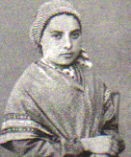
Saint Bernadette (Marie Bernadette Soubiroux)
French peasant girl who saw 14 visions of the Holy Mother at Lourdes; she was canonized in 1933. The eldest of six kids born to a poor French family, she was a gentle child, an asthmatic and delicate. On 2/11/1858, while out gathering kindling with two other kids, she saw her first of 18 mystical visions. There was a reappearance in three days, and then daily from 2/18 to 3/04/1858. Where she had prayed before the vision, a spring of clear water bubbled out. Church and state became concerned when people began to converge on Lourdes, finding healing properties in the water and inspiration in the simple girl's story. Bernadette entered a convent in Nevers in 1866 and died there on 4/16/1879. People continue to visit the springs of Lourdes today.
Combining information from Astrodatabank and Wikipedia we have:
- She was beatified on June 14, 1925.
- Her canonization occurred on December 8, 1933.
- Her feast day is April 15.
- Her patronage is for bodily illnesses.
- Saint Bernadette suffered from severe asthma. It started after she contracted cholera as a “toddler” and her susceptibility continued until her death at age 35.
Let’s look at her charts.
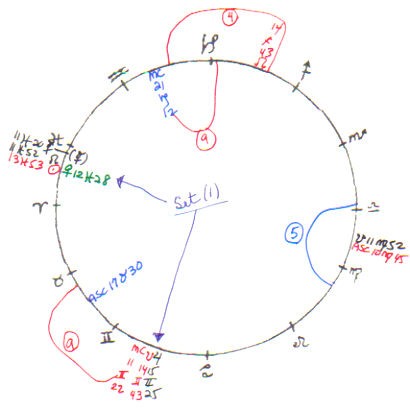
Set (1) contains Node/sun/mercury/venus/jupiter (and, arguably, both conception Angles, but the significator works without them.) Because c9 mercury rules both conception Angles, it also acts like a light which has an orb of 5°, so the set contains four lights—2 nodes, sun, and mercury, and is, therefore, highly energized. In addition to its influence to c Angles themselves, c9 mercury influences b 5th house because C Asc is in b 5th house. B9 venus rules B Asc in c 9th house. C jupiter rules c 4th house. Set (1), therefore, influences at least two Angles and 4th, 5th, and 9th houses. It lacks 8th house influence.
The set suggests the transmutation (NN) of suffering (in Pisces) into divine, or at least precious, love (venus in Pisces in a golden benefic).
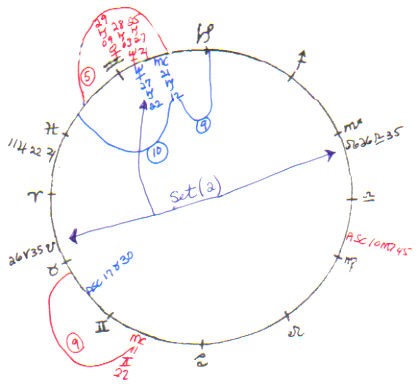
Set (2) shows node/venus/jupiter/2neptune. Except for the node, it is in c 5th house, constituting a lighted (the light does not have to be in the house) venus/jupiter in a 5th house. It is also in b 10th house, which is important because there is no Angle ruler in the set, and the benefics falling in the 10th house show the social (10th) honor (greater and lesser benefics). This time the venus is conception venus, which rules c 9th house. And c jupiter rules c 4th house. Set (2) influences a 10th house and 4th, 5th, and 9th houses and definitely shows high social esteem. In her case, the esteem occurred after she died, not so much during her lifetime. The set lacks 8th house influence.
Note she also has jupiter (well-placed) in Pisces in the same set with C MC and C Asc.
Since all of Set (2) except the node is non-harmonic, it occurs in all Saint Bernadette’s charts. But it does not get a light in all of them, so this chart shows her previously rather inert golden benefic (no light) being energized by a harmonic node to specifically imply great social recognition.
The 7th chart, the major chart of this method, often shows moments of great triumph, joy, or success. Bernadette’s 7th chart is one of the charts in which her conjunction of venus, jupiter, and neptune in Capricorn did not receive a light. But, it did on the date of her canonization, which occurred on December 8. 1933:
| Set (3) | c jupiter | 25 Capricorn 57 | |
| b neptune | 27 Capricorn 22 | ||
| c neptune | 28 Capricorn 03 | ||
| c venus | 29 Capricorn 09 | ruler of c 9th house | |
| pc7 NN | 27 Libra 29 | coming from 12 Sagittarius 26 at conception | |
| t NN | 27 Capricorn 42 | (7 p.m. LMT, Lourdes) |
The average of the values of venus, jupiter, neptune, and neptune above is 27 Capricorn 38.
Since our biographic information states that Bernadette suffered from asthma, we want to take a brief look at her 1st chart. The 1st chart is the main chart containing the significators for asthma. Here is the link to that paper: Paper on Asthma. And here is the chart for Bernadette that shows that:

Set (4) is actually not a set because b1 mars is over 2° (as a square) in orb away from B MC in orb and to be acceptable, the orb must be 2° or less. However, our biographical data tells us that Bernadette suffered from asthma from childhood onward until her death. From prior research we know that the significators for asthma are Angle/light/mars/neptune/3rd/6th/(8th), with the (8th) implying we have seen it often, but are not sure it has to be part of the significator.
Looking at Set (4), we can see that if we move B MC back anywhere from ½° to slightly over 1° the orbs from mars to MC and neptune to MC become valid. This was a European birth, so time was recorded to the nearest fifteen minutes. ½° to 1° back is the same thing as saying birth was probably two to four minutes earlier. If that was true, then we have a set with Angle/mars/neptune (with the Angle acting as the light) with influence to b 6th house through b1 mars, co-ruler (18 of 54°) of b 6th. (The rule is the planet must rule at least 1/3 of the house to be a co-ruler.)
That gives us the most important influences in the significator—Angle/light(the Angle)mars/neptune/6th. It lacks 3rd and 8th influence.
Look at Set (5). It contains mercury/mars, with mercury acting like a light because it rules both conception Angles, so Set (4) is lighted and has influence to two Angles. Mars is in c 3rd house. It rules c 3rd and 8th houses. Mars in Scorpio also has an 8th house implication because Scorpio is naturally associated with the 8th house. Set (4), then, shows Angle/light/mars/3rd/8th.
Summing Sets (4) and (5), we have all the originally suggested significators for asthma. It lacks neptune/3rd and neptune/8th, but definitely shows lighted mars/neptune with Angle and 6th influence and definitely suggests mental or brain (mercury) anxiety (mars) and transformations (Scorpio/8th).
A couple of significators in the paper on Parkinson’s disease showed similar departures from the suggested significator. That is, they were reasonable, but different than standard. Here is the link to that paper: The Paper on Parkinson’s Disease.
Her biographical data states that Saint Bernadette experienced asthma after suffering from cholera while a toddler.
Taking her 4th birthday as still belonging to the stage of toddler, she has the following progressed sets suggesting the beginning of her experience with asthma:
- Progressed c1 NN has reached 10 Pisces 56 to conjunct her conception descendant. With this method the when a harmonic node progresses to an Angle it often announces something important to that chart is about to happen.
- Progressed c1 mercury (ruler of both C Angles and acting as a light) is at 22 Libra 18. Six months earlier it was at 19 Libra 55, so during those six months it passed through Set (4) above.
- PB Asc was at 21 Taurus 56, opposition the Scorpio mars in Set (5) above.
The conjunction of b7 moon, ruler of b 4th house, at 25 Pisces 23 to b pluto at 28 Pisces 23 suggests that Bernadette was plunged into suffering at the end of her life. We have another moon/pluto in Pisces, shown in the chart of Nietzsche. Here is the link to that paper: Paper with Nietzsche’s Astrology.
We are ready to move on to the next Saint.
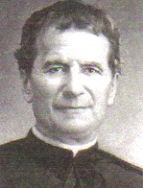
Saint Don Bosco (Giovanni Melchior Bosco)
Italian canonized Catholic priest, pioneer in educating the poor and founder of the Silesian Order.
John Bosco’s father died when he was two and he was brought up in a peasant family by his loving and very pious widowed mother. He and his older brother Joseph, supervised by their stepbrother, Anthony, tackled the endless farm work with energy. From an early age he was drawn to work among boys and young men, hearing the voice of the Master urging him on to this work. Ordained a priest on 6/05/1841 he settled in a suburb of Turin, Italy and soon had hundreds of youths attending his chapel and evening classes. He opened a boarding-school for apprentices and established workshops to teach tailoring, shoemaking and other trades to adapt the young men for the first industrial revolution in Italy.
In Turin, on the evening of 12/18/1859 he and 22 companions founded the Society of St. Francis de Sales, which before his death had spread to England, France, Spain and South America. Because of his admiration for the spirit of St. Frances de Sales he called his helpers Silesians. They offered a general education and taught skills in agriculture and trade. Girls were also helped in a similar manner when he established the Daughters of Mary, Help of Christians with the aid of St. Mary Mazzarello, a peasant woman from Genoa.
Known for his missionary work, he led expeditions to Asia, Africa and Latin America. While he was in Brazil, he predicted the exact place for the future capital.
Don Bosco died on 1/31/1888 in Turin, age 72. On Easter Sunday, 4/01/1934, his personal friend Pope Pius XI declared Don Bosco a saint; the Pope called him "a giant of sanctity." His feast day is January 31.
Combining Astrodatabank information with that of Wikipedia, we get the following:
- He was beatified on June 2, 1929.
- His canonization occurred on April 1, 1934.
- His feast day is January 31
- His patronage Christian apprentices, editors, publishers, schoolchildren, young people, and magicians.
Here are his charts. It can immediately be seen that his 9th chart is not the relevant one. His 3rd chart contains all the proper significators.
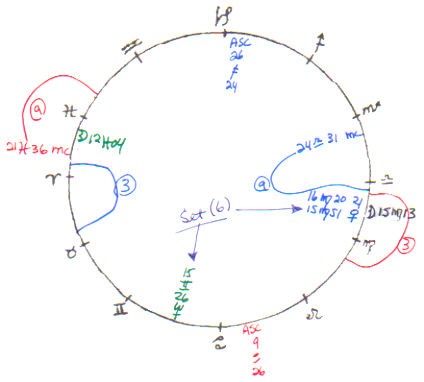
Set (6) shows moon/venus/jupiter/neptune. B venus rules B MC and b 5th house and co-rules ((25 of 29°) b 9th house and co-rules (16 of 21°) b 4th house. B jupiter rules B Asc. The conjunction of venus and jupiter is lighted (by the moon) and in b 8th house, so this set also has 8th influence.
The 7th chart is the location of the significators for psychic abilities. Here is the paper Paper on Psychics
. Bosco’s 7th chart is psychic. It contains b7 moon in Pisces (shown above) in addition to b neptune of Set (6) (showing lighted neptune) ruling b 3rd house. Because his Pisces moon also falls in c 9th house, his psychic abilities likely contained some clairvoyant capacities.
Here is his second chart with the golden benefic with the right house influences. It is his 3rd chart. It contains two qualifying golden benefics:
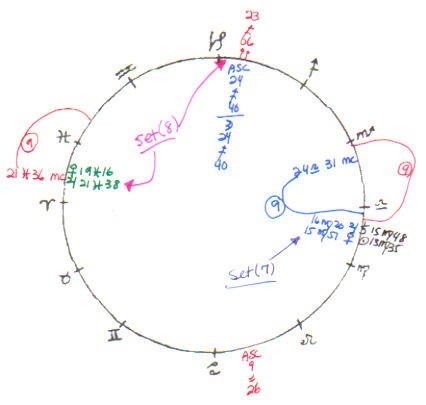
Set (7) is very similar to the one in his 7th chart—the light has changed. It contains sun/venus/jupiter/saturn, with B venus ruling B MC and b 5th house and co-ruling (25 of 29°) b 9th house and co-ruling (16 of 21°) b 4th house. B jupiter rules B Asc. And the conjunction of lighted venus and jupiter falls in b 8th house.
Set (8) contains C MC/venus/jupiter all in Pisces in the same set with c SN, with the node progressing closer to the rest of the set. Here are its positions during Bosco’s life:
| Birth Age | Progressed C SN | |
| Set (9) | 10 | 21 Gemini 56 |
| 20 | 21 Gemini 29 | |
| 30 | 21 Gemini 17 | |
| 40 | 20 Gemini 57 | |
| 50 | 20 Gemini 54 | |
| 60 | 20 Gemini 55 | |
| 70 | 20 Gemini 50 |
By the time he was ten years old Bosco’s progressing conception Node made a close set with the rest of Set (8) and it lasted for the rest of his life.
p>Set (9) influences B MC in c 4th house and b 5th and 9th houses through b3 venus and is conjunct an Angle. It lacks 8th house influence.This chart shows the honor and recognition of his canonization, which occurred on April 1, 1934. Note that progressing c Node had passed out of Set (8) only to form this new set:
| Set (9) | b7 venus | 19 Pisces 16 | ruler of B MC and b 5th house, co-ruler of b 4th and 9th houses |
| pc3 jupiter | 18 Pisces 56 | ||
| pc3 neptune | 18 Pisces 27 | ruler of C MC, co-ruler (22 of 31°) c 9th house | |
| pc SN | 18 Gemini 58 |
Our next Saint is another woman.
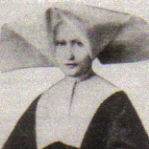
Saint Catherine (Labouré)
French ecclesiastic, a Roman Catholic nun and visionary, canonized by the church as a Saint, beatified in 1933 and canonized in 1947.
Catherine was born to a successful farming family, and she was the ninth of eleven children When she was nine, her mother died and she was raised by aunts until she was eleven. As a child, she attended morning mass several times a week, getting up to walk three kilometers for the 5:30 AM service. During a visit to a hospital run by the Sisters of Charity, she had a vision in which an old man, later determined to be Saint Vincent de Paul, told her that God wanted her to work with the sick.
In October 1828, her dad sent her to Paris to work as a maid in his brother's home. She longed to become a nun and on 1/22/1830 she was admitted as a postulant at the Charity Hospice in Chatillon. Three months later she was admitted as a novice at the Seminary of the Charity Nuns of Paris; she had frequent visions of the Lord and of St. Vincent while there. Simple, quiet and unassuming, the other Sisters sometimes teased and ridiculed Catherine about her submissiveness.
On 7/18/1830, 11:30 PM, an angel came to wake her and guided her to the Chapel where she had her first apparition of the Blessed Virgin. In this, the most famous of her visions, she was shown the medal of Immaculate Conception and was told to spread devotion. She told no one of her miraculous experience besides her spiritual director, Father Aladel. Fully convinced of her sincerity, he went to the archbishop and received sanction to strike the medal. Now known as the "Miraculous Medal," it is inscribed with "O Mary conceived without sin, pray for us who have recourse to you!" and is well known throughout the Catholic world. At the end of July 1830, she foresaw a revelation of the death of the Archbishop during the riots of 1848, and of the Commune of 1870.
On 11/27/1830, c. 8:00 PM, she had a second vision of the Holy Mother. On 2/05/1831, she was transferred to service at the old people's home on Picpus street; there she had many visions and apparitions. Self-effacing and humble, her life was very ordinary aside from these experiences, and she was a woman of high virtue. Saint Catherine spent the next forty-five years keeping mute about her visions, and Father Aladel kept her secret as well. She spent her last years at the convent at Enghien-Reuilly on the outskirts of Paris where she tended the poultry. Just prior to her death, however, she spoke of her visions to one of her superiors while attempting to fulfill the Virgin Mary’s last request and have a statue made.
On the first of January 1876, Catherine declared that it was the last time she would see the New Year. She died on 12/31/1876, around 7:30 PM, Paris.
In 1933, when she was exhumed for the church to consider "the incorruptibility of the flesh," as a perquisite of sainthood, her corpse was found to be exactly in the same sweet state as when she died. Her eyelids were still flexible over beautiful blue eyes.
She was canonized on 7/27/1947, and her feast day is November 25th.
Combining Astrodatabank information with that of Wikipedia, we get the following:
- She was beatified on May 28, 1933.
- Her canonization occurred on July 27, 1947.
- Her feast day is November 25.
- Attributes: Miraculous Medal.
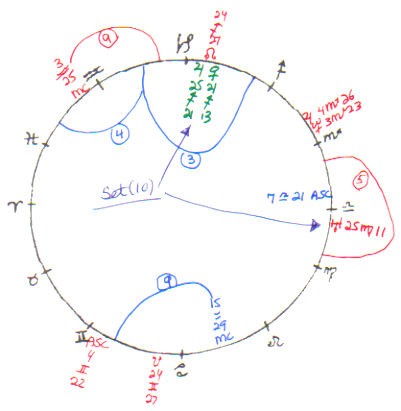
Set (10) is interesting because the only way it influences a 9th house is through the sign Sagittarius, natural ruler of the 9th house. Containing a conjunction of node/venus/jupiter in Sagittarius, then, it influences the 9th through its sign. C uranus rules C MC in b 4th house. B7 venus rules B Asc in c 5th house. It starts out lacking 8th house influence, but gains it during her lifetime. C saturn, co-ruler (11 of 18°) of c 8th house, is at 18 Virgo 51 at conception and definitely not part of set (10). I did not look to see when, technically, it entered the set, but by the time she died in 1876 at the age of 70, it was at 26 Virgo 04, so it spent a considerable part of her lifetime in Set (10).
Her other chart containing significators also shows the 9th influence through the sign Sagittarius, but is not as strong. Two sets must be summed, and even then she does have the full significator set. Nonetheless, as will be seen, these are powerful sets for promoting growth (NN) through spiritual matters (Sagittarius):

Set (11) contains moon, venus, uranus, and neptune conjunct the NN all in Sagittarius, the natural sign of the 9th house, doubly lighted by the NN and the moon. Also included in the set is b venus, ruler of B Asc, at 5 Pisces 41. C venus co-rules (20 of 45° c 5th house.
Set (12) shows two jupiters in Sagittarius lighted by b9 NN. B9 saturn rules b 4th house, bringing this lighted double-jupiter influence to the end of her life.
For her 1st apparition of the Blessed Virgin on July 18, 1830, this chart showed some of the following astrology
| Set (13) | b9 jupiter | 27 Pisces 39 | ruler of b 3rd house |
| pb venus | 27 Pisces 01 | ruler of B Asc | |
| return9 NN | 27 Virgo 12 |
The above set contains no reference to 9th houses, but it is in the 9th chart, and she has the following 9th/Sagittarian influences:
- pb9 NN is at 10 Sagittarius 27 conjunct c9 venus at 10 Sagittarius 43.
- Pc jupiter at 29 Sagittarius 31 is conjunct c9 SN at 28 Sagittarius 54.
I did not do her progressions for her second apparition of the Blessed Virgin on November 27, 1830. Through her return she had the following dynamic sets:
- return mercury at 4 Scorpio 14, and return venus, at 3 Scorpio 08, have joined her set which includes C MC at 3 Aquarius 25, c neptune at 3 Scorpio 23, and c jupiter at 4 Scorpio 26.
- return neptune at 28 Sagittarius 04 conjunct c9 SN at 28 Sagittarius 54.
The set above also played a strong part in her 10th chart in her beatification on May 28, 1933:
- return10 venus at 4 Aquarius 26 and return MC at 3 Aquarius 14 joined her set which includes C MC at 3 Aquarius 25, c neptune at 3 Scorpio 23, and c jupiter at 4 Scorpio 26.
- pb jupiter was at 6 Sagittarius 36 in the same set with b NN at 7 Sagittarius 04 and b venus at 5 Pisces 41. The orbs on this are a bit high, but I believe they work. Pb jupiter was still in the set at 7 Sagittarius 25 for her canonization on July 27, 1947.
- pb9 neptune is at 8 Cancer 33 conjunct b9 venus at 8 Cancer 17 and c sun at 9 Cancer 33.
- pc NN (coming from 24 Sagittarius 27) is at 15 Sagittarius 45 in the same set with her b9 moon at 14 Sagittarius 48, c9 saturn (ruler of c 9th house) at 16 Sagittarius 07, and b jupiter at 16 Sagittarius 09. Progressed c NN was still there for her canonization.
Our next Saint died very young.
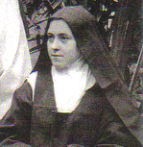
Saint Therese de Lisieux
French Roman Catholic nun canonized in 1925. She had her first visionary experience before 13 and entered a convent at 15, taking her final vows 8/08/1890. Her memoirs are published in the autobiography "Histoire D'Une Ame."
She was the youngest of nine children; five of the girls survived and they all became nuns.
Assigned to pray for Maurice Belliere, Therese responded to the young seminary student and in 21 letters, the two young people shared tenderness and affection, but with a love that focused on the kingdom of God instead of the desires of the world. A model of simplicity, sincerity, patience and devotion, she suffered with TB and died of a pulmonary hemorrhage 9/30/1897, 7:30PM, Lisieux, France at the age of 24.
Combining Astrodatabank information with that of Wikipedia, we get the following:
- She was beatified on April 29, 1923.
- Her canonization occurred on May 17, 1925.
- Her feast day is October 1.
- Her patronage: AIDS, sufferers, aviators, bodily ills, florists, illness, loss of parents, missionaries, tuberculosis, and a number of specific localities around the world.
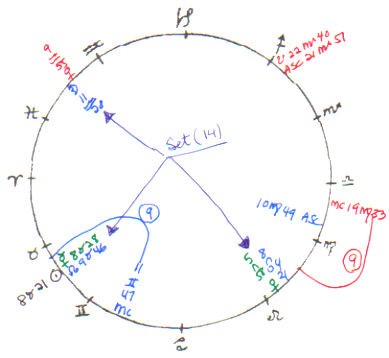
The 5th chart was not included above in the list of charts which might contain the significators for spiritual elevation. Since the 5th house is on the path, and since nuns are the brides of Christ, their sublimated sexuality likely plays a significant role in their spiritual experiences.
Set (14) contains all parts of the identified significator. It shows node/moon/mercury/2venus/jupiter. B5 mercury rules B MC and rules B Asc in c 9th house. C5 sun rules c 9th house, and comes very close to co-ruling (13 of 44°) c 8th house. B jupiter rules b 4th house. It lacks influence to a 5th house, but since it occurs in the 5th chart, it certainly has a 5th house influence.
Her second chart to contain the significators with the identified path is her 10th chart and draws on planets from the same set as above.
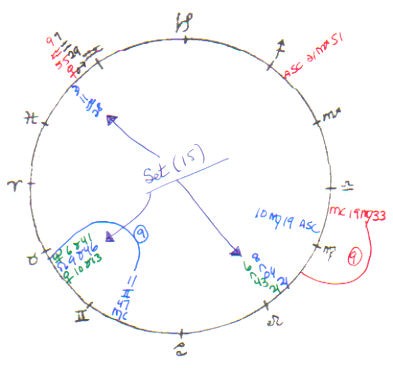
Set (15) includes node/moon/2venus/mars/2jupiter/neptune. C10 mars rules C Asc and c 5th house, and co-rules (15 of 35°) c 4th house. B10 venus rules b 9th house. B10 and b jupiter rule b 4th house. The only 8th house influence is that the two jupiters are in c 8th house and lighted.
It is perhaps odd to see such a benevolent 10th chart for an individual who died at the age of 24 and went into a convent at the age of 15. She was not famous while she was alive, but she is very famous now.
The 10th chart also reflects the relationship with the mother. According to her autobiography, The Story of A Soul,, Therese had a wonderful, very loving relationship with both parents.
For her canonization, which occurred May 17, 1925, she had the following very benefic indications:
- pb jupiter was at 2 Leo 20R conjunct c10 SN at 2 Leo 05 and in the same set with pb10 mercury, ruler of B MC and B Asc in c 9th house.
- pb10 NN was at 1 Cancer 59 conjunct pc jupiter at 2 Cancer 07 and with pc neptune at 1 Aries 58.
- pc10 mercury, ruler of C MC, was at 8 Leo 13 conjunct b jupiter at 8 Leo 04.
- pb10 jupiter was at 27 Taurus 59 with pc10 mars, ruler of C Asc, at 27 Taurus 15 and in the same set with c10 sun at 27 Leo 10, b10 NN at 27 Leo 10, and c10 venus at 29 Leo 01. Even with two lights I would not normally consider c10 venus—nearly 2° degrees away from those lights—as part of a progressed set, but the validity of the set is cemented when return moon occurs at 27 Leo 26. This set, then, contains a multiply-lighted golden benefic.
- Using her return and progressions, she has another golden benefic in this chart. Pb venus, ruler of b 9th house, is at 29 Pisces 22 with the following return positions: return mercury at 28 Pisces 32, return jupiter at 28 Sagittarius 46, return10 sun at 27 Sagittarius 10, and return10 moon at 29 Pisces 14.
- Lisieux has c jupiter at 26 Gemini 59 in the same set with b10 sun at 27 Sagittarius 10 and c saturn at 27 Sagittarius 10, but for her canonization pb venus (just above, at 29 Pisces 22) had already passed that set. It was, however, completely in this set at 27 Pisces 19 on the date of her beatification, April 29, 1923.
We did not see, above, the use of Lisieux’s 9th chart as one of her (often) two prominent charts demonstrating spiritual elevation. Her 9th chart, however, is worthy of comment. Here is that same set we saw above in her other two charts, but this is the 9th chart version:

Set (16) contains 2node/moon/2venus/mars/jupiter. It influences a 9th house through b9 venus, ruler of b 9th. It also influences a 4th house through b jupiter. The conjunction of venus to jupiter in Leo is in c 8th house and lighted, so that house is influenced. It lacks influence to a 5th house, but its lack of influence to an Angle was the main reason I didn’t use it. Nonetheless, with three lights, it is very powerful. It is also very powerful because she has mercury ruling three of her four Angles. Every time one of them progresses to the set—and progressing harmonic mercury in the 9th chart can move pretty fast, so it would hit this set often—it gives Set (16) angular influence. So this chart is also rather potent for spiritual elevation.
I wanted to include comments about Set (17). It shows a conjunction of sun to pluto in Pisces. It is a significator of intense suffering, the kind being dependent on the houses influenced. C sun rules c 9th house. So, it appears correlated with Lisieux’s desire for intense spiritual suffering. Here are a couple apropos statements from her autobiography, The Story of a Soul:
(quoted exactly as is in book) The year that followed my first communion was spent almost entirely without any interior trials for my soul. But it was during my retreat before my second Communion that I saw myself assailed by the terrible illness of scruples [excessive fear of having sinned]…You would have to pass through that martyrdom in order to understand it well. It would be impossible for me to say what I suffered for a year and a half…
All my thoughts and my simplest actions became a subject of trouble for me. (page 88)
Here’s another:
Jesus made me understand that it was by the Cross that He wanted to give me souls, and my drawing toward suffering grew in proportion to the suffering that was increasing. For five years that path was mine, but outwardly nothing betrayed my suffering, which was all the more sorrowful because I was the only one to be acquainted with it. (page 169)
I am in no position to state that Set (17) is the only astrology which represents Lisieux’s depth of suffering. It does, however, do a good job suggesting it.
We saw lighted pluto in Pisces in two other charts (it would have occurred in many charts during the time sidereal pluto was transiting Pisces, but we are interested in individuals who made public the depth of their suffering.) One was in the chart of Mary Baker Eddy, founder of Christian Science, and the other was in the chart of Friedrich Nietzsche.
In her 3rd chart Mrs. Eddy had b3 sun at 8 Pisces 29 conjunct b pluto at 7 Pisces 34, with b3 sun ruling b 9th house. She also South Node conjunction pluto in Pisces in her 1st chart. The latter, I believe, focused her suffering on her health (physical, 1st chart), while the former places it in her ordinary mind (3rd chart) with a reference to higher mind (9th house).
There may be other factors which determined the difference between these two women. Ultimately, Lisieux used and courted her suffering directly for her greater spiritual growth. While Eddy’s suffering made her more open to God, Mind, in the end she stated that suffering (disharmony, disease, death) is unreal, and she rejected it. Eddy is stating that the left half of the pillar of the Tree of Life (see paper on autism), which contains planetary similarities associated with the Sephirah in the form of mercury, mars, and saturn, is unreal, the result of illusion. Ultimately, so do other religions—both Eastern and Western. While they do not produce all suffering, as can be seen by the papers on this site, mars and saturn produce a great deal of the disharmony suffered by mankind.
I do not want to promote a romantic notion of suffering. While almost every one learns something from it, there is also such a thing as too much, or too long. Both Lisieux and Eddy had two charts containing the full significators for spiritual elevation.
Frederic Nietzsche had lighted pluto in Pisces in several of his charts (the 3rd, 5th, 7th, and 12th), partly because he was of the generations born while pluto was transiting Pisces. We are interested primarily in his 7th chart. There he has b7 moon, ruler of b 9th house, at 28 Pisces 13 conjunct c pluto at 28 Pisces 23. Nietzsche also used his suffering in a manner that can be attributed it to a 9th house use. He used it, he believed, to increase his Being.
Two differences, however. (1)Nietzsche did not have the powerfully benefic significators for spiritual growth specified in this paper (and in that for gurus), that also occurred in the charts of Lisieux and Eddy. (2) Nietzsche’s conjunction of moon to pluto in Pisces fell in his birth 4th house. Combined with (1), it suggests Nietzsche’s experience of spiritual bankruptcy, also known as a form of insanity (light/pluto/Pisces/9th without benefic support for 9th) at the end of his life (4th house influence). To elaborate, Nietzsche’s light/pluto/Pisces falls in 4th/2nd, Eddy’s in 3rd/8th, and Lisieux’s in 7th/3rd.
I cannot leave St. Therese without including a quote from her book which I think a marvelous description of one of the possible pitfalls of a Pisces sun (her conception sun):
I was really unbearable due to my overly great sensitivity. So if it happened that I involuntarily gave a slight amount of trouble to a person I loved, instead of taking the high road and not crying, I increased my fault, instead of reducing it, by crying like a baby. And when I started to become comforted by the thing itself, I cried because I had cried…All this reasoning was useless, and I couldn’t manage to correct this wicked fault. I don’t know how I could soothe myself with the sweet thought of entering Carmel (the convent), seeing that I was still in baby diapers…(all italics hers)(p. 102)
Our next Saint also suffered a lot, but his was at least partly physical, partly through the Church itself, and partly, I must assume, spiritual. His physical suffering will be shown below in his 1st chart.
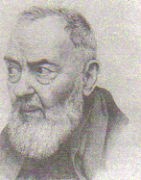
Saint Padre Pio (Francesco Forgione)
Italian healer, a Capuchin monk and stigmatic. He was a special, unique case as he was the first priest "marked by God" in two thousand years. Nuns, monks and even lay persons have experienced the stigmata but never a consecrated priest. His phenomena was witnessed and reported by tens of thousands of people.
Francesco Forgione was the eighth child in a poor family. He followed his vocation at 16 by joining the Capuchins, the most austere order of Franciscans, and he studied with them for eight years before being ordained in 1910. Conscripted in 1916, he attracted the attention of military doctors when he went on "sick call." He fell gravely ill with a temperature that climbed to 118 degrees, leaving the doctors gasping. He was given leave, sent home to die. His father superior sent him to the monastery at San Giovanni Rotondo. Once there, he recovered suddenly.
His stigmata first appeared 9/20/1918 when one of the brothers found him with his hands bleeding copiously. He was taken immediately to his cell. When the doctor arrived, he insisted that photographs be taken. There was no reason for the wounds and the blood did not coagulate, but left a pleasant odor. These stigmata remaining visible for his lifetime.
The church did not welcome the phenomena and they restricted Pio to his quarters, not allowing him to give the Mass or sacraments, while conducting examinations and inquiries, both by medical specialists and church dignitaries. He was kept under tight watch to see that he was not physically mutilating himself, with his hands in tight dressings and sealed with wax. No fraud could be found; indeed, the bloody bandages remained sweet smelling. With a dilemma on their hands, the Vatican forbade him to show his hands to anyone other than his inquisitors. From 1931 to 1933, he was literally sentenced to remain incognito.
On 6/05/1923, the Vatican had published an apostolic act officially informing the public that the phenomena associated with the Capuchin brother Padre Pio had not been authenticated by Rome as supernatural. In 1933, to silence the Padre, his superiors ordered him to another monastery. When word got out, the people revolted. Peasants, businessmen, hotelkeepers and even the mayor blocked all the exits from the monastery, armed with hatchets, scythes and rifles, ready to stop any attempt to take their priest away. Business was booming in the town due to the rumors and declarations of evidence, and the good Italians wed their sense of devotion with their sense of commerce. Never again did Padre Pio receive orders of transfer.
While the priest was in solitary confinement, people reported that he was seen at different bedsides of the ill and stricken. At times he was seen hundreds of miles away, comforting and healing, at the same time that he was known to be at prayers in the chapel. Pio was allowed once more to celebrate the Mass - - at 5:00 AM. The people were not deterred by the hour but flocked to the church to see the man whose hands bled when he lifted them in blessing, as had those of Christ.
No mystic was ever victim of so many attacks by his peers or faced such hostility in the bosom of the church. It was the sheer weight of the mass of people who sustained him. During WW II, soldiers from Europe and as far away as American made the rugged trek up to the mountainous village, and carried the awesome story home with them of the priest who bore the wounds of Christ. One day in 1947, a Polish priest, just ordained, came to the monastery to make his confession and heard Pio say, "One day you will be Pope." Later, John Paul II prayed before the tomb of Padre Pio.
His miracles numbered in the thousands. In the tradition of stigmatics, he had the graces of bilocation (being seen in more than one place simultaneously); distant vision; knowledge of the past, present and future life of the faithful; reading of souls; and healing. He suffered continually, with the wounds also on his feet [italics mine], and it was witnessed that on occasion, while saying the Mass, he levitated. While in the state of mystical ecstasy, he appeared to be catatonic, though at times he was heard conversing with unseen angels. Known as a great healer, he was visited by multitudes, whose donations helped build and support a hospital.
Padre Pio died on 9/23/1968. On the day of his death, the stigmata disappeared, leaving a clear and immaculate skin.
He was beatified by the Roman Catholic church on 5/02/1999 and declared Saint on 6/16/2002, Rome at 10.21 AM (time from TV).
According to Wikipedia (11/6/10), In addition to his childhood illnesses, throughout his life Padre Pio suffered from "asthmatic bronchitis" [italics mine]. He also had a large kidney stone, with frequent abdominal pains. He also suffered from a chronic gastritis, which later turned into an ulcer. He suffered from inflammations of the eye, of the nose, of the ear and of the throat, and eventually formed rhinitis and chronic otitis.
Combining Astrodatabank information with that of Wikipedia, we get the following for Saint Padre Pio:
- He was beatified on May 2, 1999.
- His canonization occurred on June 16, 2002.
- His feast day is September 23.
- His patronage: civil defense volunteers, Catholic adolescents
Here are his charts.
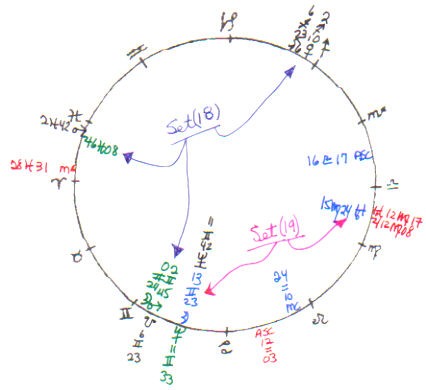
Set (18) is comprised of node/moon/2mars/venus/jupiter. The midpoint between the SN and moon is 2 Gemini 59. C7 venus co-rules (30 of 36°) c 4th house. B moon rules B MC and co-rules (25 of 36°) b 9th house. C7 mars rules c 5th house. B7 mars co-rules (16 of 22°) b 6th house, which might have something to do with the service he provided others in spite of the fact he always lived within the walls of the monastery. It lacks 8th house influence.
Pio prophetic abilities are shown in this chart, shown in Set (19) below. Its double influence to 9th houses in addition to influence to a 3rd (through the moon/neptune/neptune being in Gemini, natural sign of the 3rd house). His ability might also have been clairvoyant, but I have never really seen a definition the discriminates between psychic and clairvoyant. I understand the latter to be purer, perhaps more comprehensive. Here is the link to the paper on psychic abilities: Paper on Psychics. It contains a link to the paper about Nostradamus.
| Set (19) | c7 neptune | 11 Gemini 04 | ruler of C MC, co-ruler (29 of 32°) of c 9th house |
| b7 neptune | 11 Gemini 33 | ||
| b moon | 13 Gemini 23 | ruler of B MC, co-ruler (25 of 36°) of b 9th house | |
| c jupiter | 12 Virgo 08 | ||
| c uranus | 12 Virgo 17 | ruler of c 9th house | |
| b uranus | 15 Virgo 24 |
Pio has an unusual mixture of 3rd and 9th house influences. Here is one from his 3rd chart.
| Set (20) | b3 jupiter | 20 Gemini 04 | |
| b venus | 20 Gemini 49 | ruler of B Asc in c 4th house | |
| b3 pluto | 21 Gemini 58 | ||
| c saturn | 24 Gemini 19 | ||
| c3 pluto | 24 Gemini 10 | ||
| b3 sun | 24 Gemini 31 |
All of Set (19), which is Gemini, natural ruler of the 3rd house, falls in b 9th house, of which the natural ruler is Sagittarius, the opposite sign to Gemini. Does it show a very active(Gemini) powerfully expansive (venus conjunct jupiter) ordinary mind which is directed toward religious (9th) matters?. The saturn/pluto part of it is reclusive. It also shows intense focus (pluto) on essentials (saturn). If there ever was an ordinary mind (Gemini) which could “reach Heaven,” this set shows it. Maybe it also means he can easily read the Akashic record.

The spread of Set (20) is from 10° in Virgo to 16° in Pisces, but since the set includes three lights which are solidly in the set, it is quite acceptable. It contains sun/2moon/venus/2mars/jupiter/saturn/2uarnus/pluto. C10 moon rules C Asc in b 9th house. B moon rules B MC and co-rules (25 of 36°) b 9th house. C10 mars rules c 5th house. C10 venus co-rules (30 of 36°) c 4th house. B10 saturn rules b 4th house. C uranus rules c 8th house. So, the set influences two Angles and 4th, 5th, 8th, and 9th houses.
On the date of his canonization, June 16, 2002, Set (2) picked up pb10 moon, ruler of B MC and co-ruler of b 9th house, at 11 Gemini 34, return 10 sun at 11 Virgo 04, and return venus at 13 Gemini 08. He also had pc10 jupiter at 9 Cancer 55 entering the set which contained b10 venus, ruler of B Asc, at 9 Capricorn 46 and b10 moon, ruler of B MC, at 10 Libra 31. Conception a little earlier would have put his C Asc in the set.
In her 10th chart Mary Baker Eddy had that combination of light/venus/jupiter with light/mars/saturn, all with 9th house influence. Since she was hammering out her identity within the social context of her culture, hers mars/saturn/9t/10th represented lawsuits (9th). Here, the Padre has a combination of light/venus/jupiter with light/mars/saturn/pluto, also both with 9th house influence. Since Pio did not live outside the monastery, his light/mars/saturn/pluto had to find a context within it to express. It came out as occasional severe isolation (saturn/pluto) and conflicts (mars/saturn) with religious peers rather than legal battles, though had some of those two—religious ones.
We wanted to look at his significator for “asthmatic bronchitis” in his 1st chart before leaving his astrology.
Briefly, from the research on asthma, the significators usually occur in the 1st chart and are Angle/light/mars/neptune/(saturn)/3rd/6th/(8th). When saturn is part of the set it seems to cause attacks to be more life threatening. The same for the 8th house—the attacks are so severe they suggest a life transformation. Here is the link to that paper
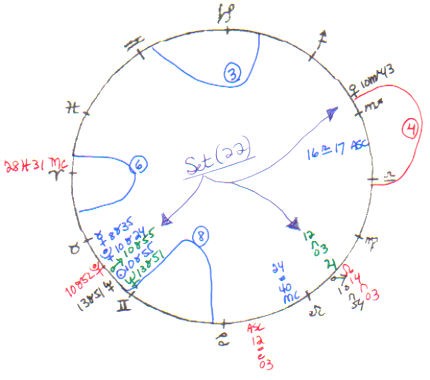
Set (22) shows node/sun/mercury/venus/2mars/jupiter/2neptune/2pluto. B1 mars co-rules (16 of 22°) b 6th house. B mercury co-rules (19 of 34°) b 8th house. B1 jupiter rules b 3rd house. C1 neptune rules C MC in b 6th house. C1 venus co-rules (30 of 36°) c 4th house, so it looks like this set bothered him his whole life.
Progressing conception node is moving closer to the mars part of the set until the day he dies. Its location on his 80th birthday (he died age 81) was 11 Leo 41R.
I wanted to include a Pope, and this one, Pope Pius X, was also declared a Saint.
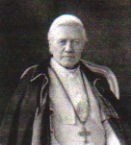
Pope Pius X (Giuseppe Melchior Sarto)
(Astrodatabank didn’t have much biographical information, so this is from the first section in Wikipedia) Pope Pius X (Ecclesiastical Latin: Pius PP.X) (2 June 1835 – 20 August 1914), born Giuseppe Melchiorre Sarto, was the 257th Pope of the Catholic Church, serving from 1903 to 1914, succeeding Pope Leo Xiii. He was the first pope since Pope Pius V to be canonized. Pius X rejected modernist interpretations of Catholic doctrine, promoting traditional devotional practices and orthodox theology. His most important reform was to publish the first Code of Canon Law, which collected the laws of the Church into one volume for the first time. He was a pastoral pope, encouraging personal piety and a lifestyle reflecting Christian values. He was born in the town of Riese, which would later append "Pio X" (Pius X's name in Italian) to the town's name.
Pius was particularly devoted to Mary; his encyclical Ad Diem Illum expresses his desire through Mary to renew all things in Christ, which he had defined as his motto in his first encyclical. Pius believed that there is no surer or more direct road than by Mary to achieve this goal. Pius X was the only Pope in the 20th century with extensive pastoral experience at the parish level, and pastoral concerns permeated his papacy; he favoured the use of the vernacular in catechesis. Frequent communion was a lasting innovation of his papacy. Pius X, like Pope Pius IX, was considered by some to be too outspoken or brusque. His direct style and condemnations did not gain him much support in the aristocratic societies of pre-World War I Europe.
His immediate predecessor had actively promoted a synthesis between the Catholic Church and secular culture; faith and science; and divine revelation and reason. Pius X defended the Catholic faith against popular 19th century views such as indifferentism and relativism which his predecessors had warned against as well. He followed the example of Leo XIII by promoting Thomas Aquinas and Thomism as the principal philosophical method to be taught in Catholic institutions. Pius opposed modernism, which claimed that Roman Catholic Dogma should be modernized and blended with nineteenth century philosophies. He viewed modernism as an import of secular errors affecting three areas of Roman Catholic belief: theology, philosophy, and dogma.
Personally, Pius combined within himself a strong sense of compassion, benevolence and poverty, but also stubbornness and a certain stiffness. He wanted to be pastoral and was the only pope in the 20th century who gave Sunday sermons every week. ]His charity was extraordinary, filling the Apostolic Palace with refugees from the 1908 Messina earthquake, long before the Italian government began to act on its own. He rejected any kind of favours for his family; his brother remained a postal clerk, his favourite nephew stayed on as village priest, and his three sisters lived together close to poverty in Rome. He often referred to his own humble origins, taking up the causes of poor people. I was born poor, I have lived poor, and I wish to die poor. Considered a holy person by many, public veneration of Pope Pius began soon after his death. Numerous petitions resulted in an early process of beatification.
Combining Astrodatabank information with that of Wikipedia, we get the following for Pope Pius X:
- He was beatified on June 3, 1951.
- His canonization occurred on May 29, 1954.
- His feast day is August 21.
- Her patronage: first communicants, pilgrims, and various localities

Set (23) consists of node/sun/2moon/venus/mars/jupiter/uranus/neptune. C9 venus rules c 9th house, and co-rules (12 of 31°) c 8th house. B9 mars rules B MC. C jupiter rules c 4th house. C9 uranus co-rules (21 of 29°) c 5th house. Set (23 therefore influences an Angle, 4th, 5th, 8th, and 9th houses and contains light/venus/jupiter.
His second significator chart is his 10th.
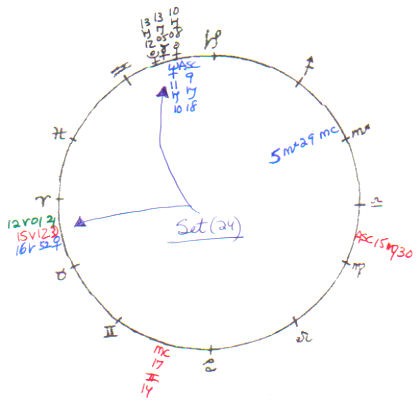
Because c10 mercury rules an Angle, it acts like a light and has a 5° orb, making it possible to include c10 venus in this set. Technically, B Asc could also be included, but I think the planets in Aries too far from that Ascendant to consider that it a planet/Angle set.
In Set (24), then, is moon/mercury/2venus/jupiter/neptune/pluto. C moon co-rules (22 of 35°) c 10th house. C10 mercury rules C Asc in b 8th house and co-rules c 7th, and C MC in b 6th house. B venus rules b 4th, 5th, and 9th houses. C10 venus rules c 9th house. Thus, all the designated significators for spiritual elevation are in this set. I suspect the 6th house influence shows his service as Pope, and the 7th and 8th house influences were surely useful for functioning as head of the Catholic church as well as being elected by peers.
His progressions for elevation to the office of Pope include the two following suggestive sets. These progressions, unlike those for the others in this paper, occurred while he was still alive.:
| Set (25) | pc venus | 1 Sagittarius 33 | ruler of c 9thj house |
| c SN | 1 Sagittarius 34 | ||
| pc10 jupiter | 0 Sagittarius 35R | ruler of c 4th house, co-ruler c 3rd |
and
| Set (26) | c jupiter | 17 Taurus 11 | ruler of c 4th house |
| pc jupiter | 17 Taurus 33R | ||
| c10 NN | 18 Taurus 43 | ||
| b sun | 19 Taurus 09 | ||
| b10 moon | 19 Taurus 46 | ||
| pc10 venus | 18 Taurus 33 | ruler of c 9th house | |
| c10 sun | 19 Leo 46 | ruler of c 12th house, co-ruler c 11th | |
| b10 saturn | 20 Aquarius 26 | ruler of B Asc | |
| return10 North Node | 18 Scorpio 51 |
Saturn is included in the above set provisionally as an Angle ruler. Likely he had progressed Angles to venus and jupiter, but time of birth is only to the nearest 15 minutes in this un-rectified chart, so we cannot know for sure. It is the return harmonic node which, so to speak, “clinches” the activity of this set in the present.
Pius X died of a heart condition. Here is what Wikipedia (11/7/10) had to say about his death:
In 1913 Pius X, a smoker, suffered a heart attack, and subsequently lived in the shadow of poor health. In 1914, the Pope fell ill on the Feast of the Assumption of Mary (15 August), an illness from which he would not recover. His condition was worsened by the events leading to the outbreak of World War I (1914–18), which reportedly sent the 79 year-old Pope into a state of horror and melancholy. He died on 20 August 1914 of a heart attack, only a few hours after the death of Jesuit leader Franz Xavier Wernz.
Following his death, Pius X was buried in a simple and unadorned tomb in the crypt below St. Peter’s Basiclica. Papal physicians had been in the habit of removing organs to aid the embalming process. Pius X expressly prohibited this, however, and none of his successors have allowed the practice to be reinstituted.
We want to take a quick look at the astrology involved in his death.
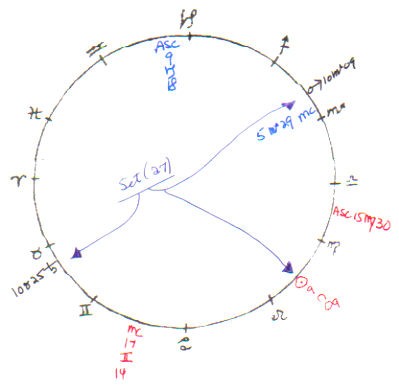
Set (27) is simple enough. It shows sun/mars/saturn, with c6 mars ruling c 8th house while c6 saturn co-rules (22 of 35°) c 4th house. Any set that contains sun/mars/saturn suggests severe injury or illness. This one lacks Angle influence, so it is not forefront. With its influence to a 4th house, it will likely come into play at the end of his life, and probably represents his heart attacks.
While I have seen sun/mars/saturn before representing a heart attack, I have also seen sun/mars/saturn when it represented a life-changing, severe back injury. Right now I do not know how to tell them apart.
At the time of the pope’s death, pb6 NN (coming from 6 Virgo 41 at birth) had entered Set (27) and was at 8 Leo 20, was at 9 Leo 09 the year before that (1913), and at 9 Leo 39 the year before that (1912). Furthermore, at 1:35 a.m. EET when he died, transiting6 node was at 8 Leo 24. Since the set still lacked Angle influence, he had to have picked up Angle/mars and Angle/saturn through progressions.
We have come to the last saint to be included in this paper, Saint Edith Stein.
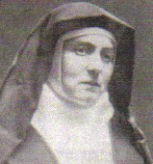
Saint Edith Stein
German Jew who took the name of Teresa Benedicta of the Cross as a Roman Catholic nun. On 10/18/1998, she was canonized by the Church as a Saint. In that she was born Jewish, Jewish leaders termed the canonization "problematic," "offensive" and "an attempt to appropriate the Holocaust without coming to grips with it." The act is seen by some to be part of Pope John Paul II's grand plan for the church's millennial jubilee, an orchestration of Catholic-Jewish brotherhood.
Born on Yom Kippur, Stein renowned (sic) her faith and declared herself an atheist by her teens. As a student at the University of Gottingen, she became acquainted with Edmund Husseri and became interested in his philosophy. When Husseri moved to the University of Freiburg, he asked Stein to join him there as his assistant. She received her doctorate in leading philosophers, becoming one of the first German women to earn a Ph.D., specializing in the philosophical sub discipline of phenomenology. At Gottenberg, she was first introduced to Catholicism through Christian phenomena. Attracted to this faith, she returned on a holiday in 1921 to Breslau, where her profound encounter with the autobiography of the mystic St. Theresa of Avila inspired her conversion. She was baptized on 1/21/1922 and gave up her assistantship with Husseri to teach at a Dominican girls' school in Speyer, 1922-1932. While at Speyer she translated St. Thomas Aquinas' De Veritate (On Truth) and familiarized herself with the R.C. philosophy in general. In 1932 she became a lecturer at the Institute for Pedagogy at Munster but, because of anti-Semite legislation passed by the Nazi government, was forced to resign the post in 1933.
Stein entered the Carmelite convent at Cologne in 1934, taking the vows of a Carmelite nun. While there, she completed her metaphysical work, "Endliches und ewiges Sein."
Sister Teresa's faith did not shield her from the Nazi horror. She was made to wear the Jewish star, and although her order transferred her to Holland in 1938, she was rounded up along with her sister Rosa, also a convert, and other Jews on 7/26/1942 by the Nazi occupation forces. Survivors of the death camp testified that she helped all other sufferers with great compassion. On 8/09/1942, she and her sister both died in the gas chambers of Auschwitz.
Catholic conversion is a delicate subject to Jews, and her present recognition represents an area of unease. To qualify as a saint, she is said to have performed healing rites, and prayers to her have resulted in recovery.
Combining Astrodatabank information with that of Wikipedia, we get the following for Saint Edith Stein:
- She was beatified on May 1, 1987.
- Her canonization occurred on October 11, 1998.
- Her feast day is August 9.
- Her patronage: Europe, loss of parents, martyrs, World Youth Day
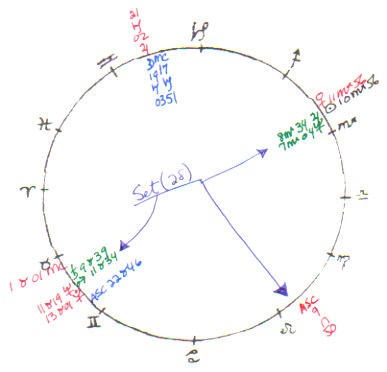
Set (28) includes Asc/sun/venus/jupiter/mars/saturn/neptune. C10 sun rules C Asc in b 4th house. B10 jupiter rules b 8th and 9th houses. C neptune rules c 9th house. There is no 5th house influence.
Its influence to b 4th house through C Asc shows both her spiritual elevation at the end of life (Angle/light/venus/jupiter/9th) and the siege conditions (concentration camp) at the end of her life (Angle/light/mars/saturn/neptune).
The sun/venus/jupiter conjunction in Scorpio falls simultaneously in 6th/4th houses. The 6th influence shows her desire to be of service to others.
For her canonization, she had several conjunctions of venus and jupiter. Pb venus at 15 Aquarius 39 was conjunct pc jupiter at 15 Aquarius 42, and pb jupiter at 25 Aquarius 23 was conjunct pc venus at 25 Aquarius 12, and finally, pc moon was at 21 Cancer 15, c jupiter at 21 Capricorn 02 conjunct return10 venus at 21 Capricorn 43 (in b 10th house).
Stein’s second chart containing a golden benefic with 9th house influence was in her 12th chart. Her conversion was relatively late—at the age of thirty. Perhaps that accounts for the strength of this 12th chart. Though it is strongly benefic, conversion from one religion to another can cause numerous, presumably unpleasant, shockwaves, among family, friends, and professional peers. Even if it does not, conversion, like old age, is not for the faint-hearted.

Set (29) is comprised of sun/mercury/venus/jupiter/neptune/pluto. C12 sun rules C Asc in b 4th house. C venus rules C MC. B jupiter rules b 8th and 9th houses. C neptune rules c 8th and 9th houses.
Set (29), like Set (28), lacks a 5th influence. It can be found by summing two influences: (1) b sun, ruler of b 5th house, at 25 Virgo 55 is in the same set with c12 jupiter, ruler of c 5th house, at 24 Gemini 29. And (2) b12 sun, ruler of b 5th house, at 2 Capricorn 46, is in the same set with b12 venus, ruler of B Asc, at 1 Aries 58.
Also in regard to the 5th house and her sexuality, both of Steins non-harmonic saturns are in her birth 5th house—c saturn at 23 Leo 58, and b saturn at 0 Virgo 48 (conjunct b saturn at 0 Virgo 58) In her 7th chart the latter gets a light from b7 SN at 2 Sagittarius 43. These imply the emphasis in Stein’s charts is on the suppression or diminution of sexuality.
Her death at Auschwitz was shown best in her 7th chart, with the following set:
- b7 saturn, ruler of B MC, at 7 Taurus 14
- b7 mars, ruler of b 7th house and co-ruler (23 of 24°) of b 12th house, at 8 Taurus 40
- pc sun, ruler of C Asc in b 4th house, at 8 Aquarius 19
- pc7 neptune at 7 Leo 15
The above set shows the influence of lighted mars/saturn/neptune (siege conditions) to both an Angle and 4th house.
As long as Stein biographical information brought up the subject of St. Teresa of Avila, I want to include a quote from a book about her. The quote is from the Introduction, by the translator, Mirabai Starr, so it is not the words of Avila. But, it does a good job of suggesting what will follow. (I would do Avila's chart, but my ephemeris does not go back far enough.) Here is the excerpt:
The Calling There is a secret place. A radiant sanctuary. As real as your own kitchen. More real than that. Constructed of the purest elements. Overflowing with the ten thousand beautiful things. Worlds within worlds. Forests, rivers. Velvet coverlets thrown over featherbeds, fountains bubbling beneath a canopy of stars. Bountiful forests, universal libraries. A wine cellar offering an intoxication so sweet you will never be sober again. A clarity so complete you will never again forget.
This magnificent refuge is inside you. Enter. Shatter the darkness that shrouds the doorway. Step around the poisonous vipers that slither at your feet, attempting to throw you off your course. Be bold. Be humble. Put away the incense and forget the incantations they taught you. Ask no permission from the authorities. Slip away. Close your eyes and follow your breath to the still place that leads to the invisible path that leads you home.
Listen. Softly the One you love is calling. Listen. At first, you will only hear traces of his voice...let the idle chatter between friends drop down to what matters. Listen. Later his voice will come closer. A whisper you're almost sure is meant for you fading in and out of the cacophany of thoughts, clearer in the silent space between them. Listen, his call is flute music, far away. Coming closer...(from pages 1 and 2, the Introduction to the book The Interior Castle: St. Teresa of Avila)
Conclusion
Results for all seven saints are tabulated and shown in the table below. All of the charts showed golden benefics—a matter not included in the tabulation because it is already taken for granted.
I have only counted two charts per saint even if some--like Therese of Lisieux's 9th chart--had three charts with the proper golden benefics. No matter how many times an Angle or house was influenced, I counted it only once for that house.
With seven saints, then, counting sets in two charts each, complete significators would yield 14 influences each to Angles, 4th, 5th, 8th, and 9th houses. Here are the results:
| Influence To | Influence To | Influence To | Influence To | Influence To | ||
| Saint | Chart | an Angle | 4th House | 5th House | 8th House | 9th House |
| Bernadette | 9th | Yes | Yes | Yes | Yes | Yes |
| Bernadette | 10th | Yes | Yes | Yes | ||
| Bosco | 7th | Yes | Yes | Yes | Yes | Yes |
| Bosco (set 7) | 3rd | Yes | Yes | Yes | Yes | Yes |
| Catherine | 7th | Yes | Yes | Yes | Yes | Yes |
| Catherine | 9th | |||||
| Lisieux | 5th | Yes | Yes | Yes | Part | Yes |
| Lisieux | 10th | Yes | Yes | Yes | Yes | |
| Pio | 7th | Yes | Yes | Yes | Yes | |
| Pio | 10th | Yes | Yes | Yes | Yes | |
| Pius | 9th | Yes | Yes | Yes | Yes | Yes |
| Pius | 10th | Yes | Yes | Yes | Yes | Yes |
| Stein | 10th | Yes | Yes | Yes | Yes | |
| Stein | 12th | Yes | Yes | No | Yes | Yes |
| TOTALS | 14 | 12 | 13 | 11 | 8 | 13 |
The count for the occurrence of the different charts is:
- Five of the 10th chart
- Three of the 9th chart
- Three of the 7th chart
- One of the 3rd chart
- One of the 5th chart
- One of the 12th chart
- Fourteen Total
The surprisingly high count for the 10th chart, as I observed earlier, is likely connected to the fact that once declared saints (and deceased), these individuals have world-wide recognition. This explanation seems reasonable because most of them, while alive, observed no such success and honor as would go with a 10th chart golden benefic.
The higher occurrence of the 10th chart shows a difference between these saints and gurus, who only showed one 10th chart among a much higher number of gurus. But, it is not as if famous gurus do not enjoy tremendous posthumous honor and fame. They do. They may (or may not) show more 10th charts with complete significators for spiritual elevation than I demonstrated in my paper because they fulfilled the "two chart" significators before I got to looking at 10th charts.
Discussion
We can be reasonably sure that all the individuals in this paper, as well as in the paper on gurus, are, indeed, spiritually accomplished individuals. However, I should say something about the fact that golden benefics, with the path represented here, can occur in the charts of individuals who are not. As far as I know, there is no way through the chart alone to be certain of their elevation. In the case of the individuals who are not spiritually elevated, they would experience their golden benefic in some other form, for instance, a great love of aviation, possibly even ecstatic experiences through it. I included some charts at the bottom of the paper on gurus that showed individuals with, for instance, 9th chart or Sagittarian golden benefics who were not recognizably religious. Or who experienced their highest spiritual experiences through things like sky-diving. Ultimately, we may be able to separate these different types of manifestations through the chart itself, but right now I do not know how.
In addition, I must add that while the significators for spiritual elevation appear one of the astrological requirements for realization of high spirituality, they are not a guarantee of it. The other infinitely larger factor in the experience is the Lord, and nobody can predict His behavior.

Bibliography
The Story of a Soul: a new translation by Robert J. Edmonson. Brewster, Massachusetts, Paraclete Press, 2006.
The Interior Castle: St. Teresa of Avila, a new translation and introduction by Mirabai Starr. New York: Riverhead Books, a member of the Penguin Group (USA), Inc., 2003.
Data Acknowledgments
Individuals are listed in the order in which they occurred in this paper Letters following each name show the Rodden rating.
Saint Bernadette (Marie Bernadette Soubiroux) (AA)
Birth: 1/7/1844, 2:00 p.m. LMT, Lourdes, France. From
Astrodatabank by Lois Rodden and Mark McDonough. Luc de Marre quotes records given by Choisnard in Language Astral, 1922, p. 218.
Conception:3/27/1843, 5:59:03 p.m. LMT, Lourdes, France.
Saint John Bosco (San Giovanni Melchior Bosco) (AA)
Birth: 8/15/01815, 5:20 p.m. LMT, Castelnuovo don Bosco, Italy. From
Astrodatabank by Lois Rodden and Mark McDonough. Bordoni quotes baptism, “Vespere” (At the time of vespers).
Conception:11/05/1814, 9:52:43 p.m. LMT, Castelnuovo don Bosco, Italy.
Saint Catherine Labouré (AA)
Birth: 5/2/1806, 6:00 p.m. LMT, Fain les Moutiers, France. From
Astrodatabank by Lois Rodden and Mark McDonough. Petitallot quotes B.C., Cadran No. 25, 12/1995.
Conception:7/25/1805, 1:41:39 a.m. LMT, Fain les Moutiers, France.
Saint Therese de Lisieux (Marie Francoise Therese Martin) (AA)
Birth: 1/2/1873, 11:30 p.m. LMT, Alencon, France. From
Astrodatabank by Lois Rodden and Mark McDonough. T. Pat Davis quotes data from Mayoral Register.
Conception:3/23/1872, 12:42:41 a.m. LMT, Alencon, France.
Saint Padre Pio (Francesco Forgione) (AA)
Birth: 5/25/1887, 4:10 p.m. GMT, Pietrelcina, Italy. From
Astrodatabank by Lois Rodden and Mark McDonough. Bordoni quotes B.C. in Datanotizie No. 26, 7/1999, 5:00 pm Rome Time.
Conception:8/17/1886, 2:39:07 a.m. GMT, Pietrelcina, Italy.
Pope Pius X (Giuseppe Melchior Sarto) (B)
Birth: 6/2/1835, 11:00 p.m. LMT, Riese Piox, Italy. From
Astrodatabank by Lois Rodden and Mark McDonough. Lescaut quotes Choisnard for biography. Fagan same data in AFA Bulletin 10/1954.
Conception:8/25/1834, 8:29:38 a.m. LMT, Riese Piox, Italy.
Saint Edith Stein (B)
Birth: 10/12/1891, 7:30 p.m. LMT, Breslau, Poland. From
Astrodatabank by Lois Rodden and Mark McDonough. Axel Harvey quotes Elisabeth de Miribel, “Edith Stein,” Paris, Seuil, 1954, p. 28 and p. 206, in Cahiers Astrologiques No. 54. Biography: Hilda C. Graef, “The Scholar and the Cross,” 1955. Biography: Waltraud Herbsmith, “Edith Stein,” 1985.
Conception:12/30/1890, 8:50:38 p.m. LMT, Breslau, Poland.
About This Method
Return to Home Page
About the Author
Contact the author at: sleeweidner@yahoo.com